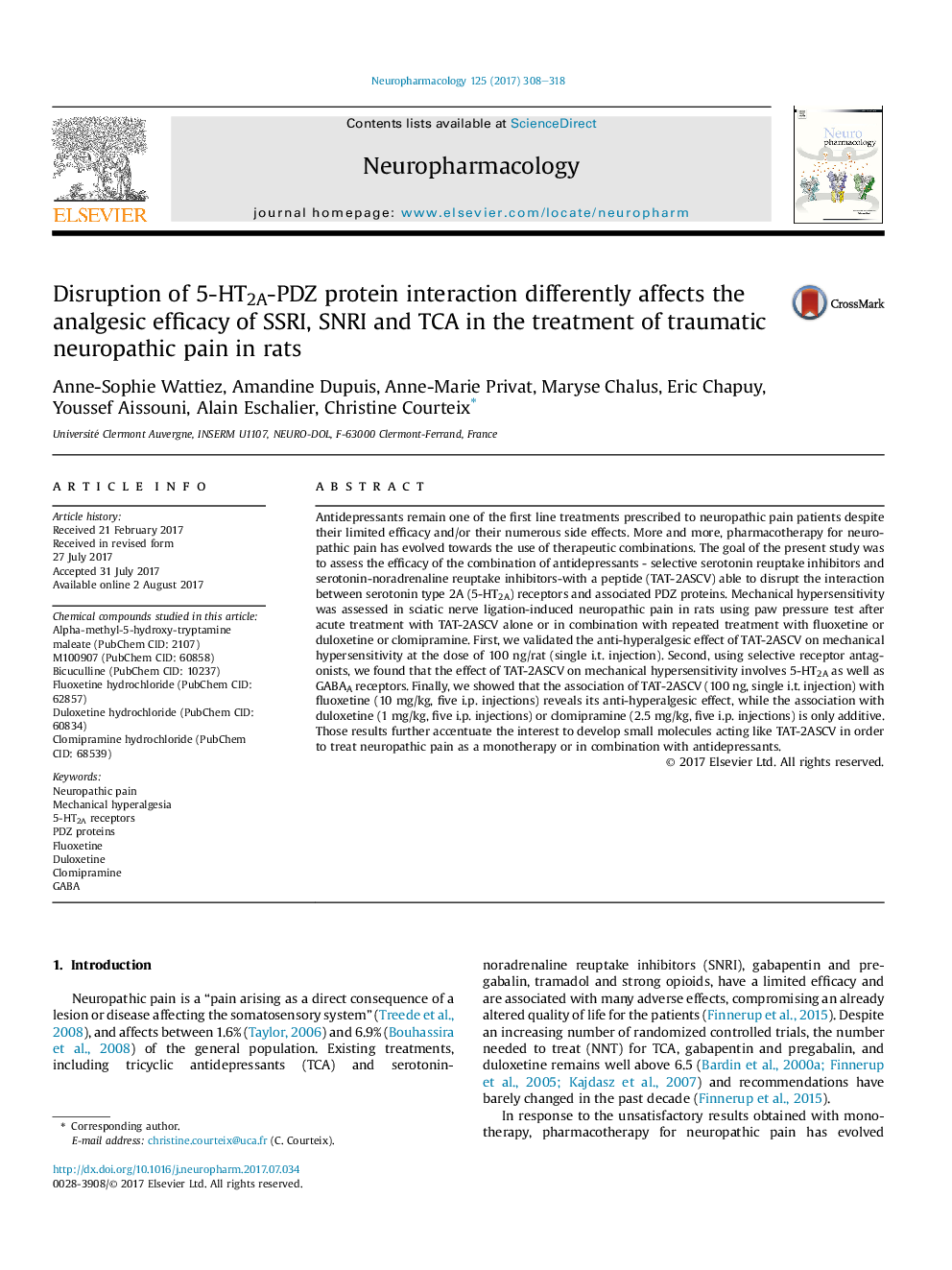| Article ID | Journal | Published Year | Pages | File Type |
|---|---|---|---|---|
| 5548824 | Neuropharmacology | 2017 | 11 Pages |
â¢Rescuing 5-HT2A receptor responsiveness reduces mechanical pain in neuropathic rats.â¢Rescuing 5-HT2A receptor responsiveness reveals analgesic efficacy of SSRI.â¢Rescuing 5-HT2A receptor responsiveness improves the analgesic effect of TCA and SNRI.â¢Functional 5-HT2A and GABAA receptors are essential for SSRI-induced analgesia.â¢Targeting 5-HT2A receptors may improve SSRI SNRI and TCA neuropathic pain treatment.
Antidepressants remain one of the first line treatments prescribed to neuropathic pain patients despite their limited efficacy and/or their numerous side effects. More and more, pharmacotherapy for neuropathic pain has evolved towards the use of therapeutic combinations. The goal of the present study was to assess the efficacy of the combination of antidepressants - selective serotonin reuptake inhibitors and serotonin-noradrenaline reuptake inhibitors-with a peptide (TAT-2ASCV) able to disrupt the interaction between serotonin type 2A (5-HT2A) receptors and associated PDZ proteins. Mechanical hypersensitivity was assessed in sciatic nerve ligation-induced neuropathic pain in rats using paw pressure test after acute treatment with TAT-2ASCV alone or in combination with repeated treatment with fluoxetine or duloxetine or clomipramine. First, we validated the anti-hyperalgesic effect of TAT-2ASCV on mechanical hypersensitivity at the dose of 100 ng/rat (single i.t. injection). Second, using selective receptor antagonists, we found that the effect of TAT-2ASCV on mechanical hypersensitivity involves 5-HT2A as well as GABAA receptors. Finally, we showed that the association of TAT-2ASCV (100Â ng, single i.t. injection) with fluoxetine (10Â mg/kg, five i.p. injections) reveals its anti-hyperalgesic effect, while the association with duloxetine (1Â mg/kg, five i.p. injections) or clomipramine (2.5Â mg/kg, five i.p. injections) is only additive. Those results further accentuate the interest to develop small molecules acting like TAT-2ASCV in order to treat neuropathic pain as a monotherapy or in combination with antidepressants.
